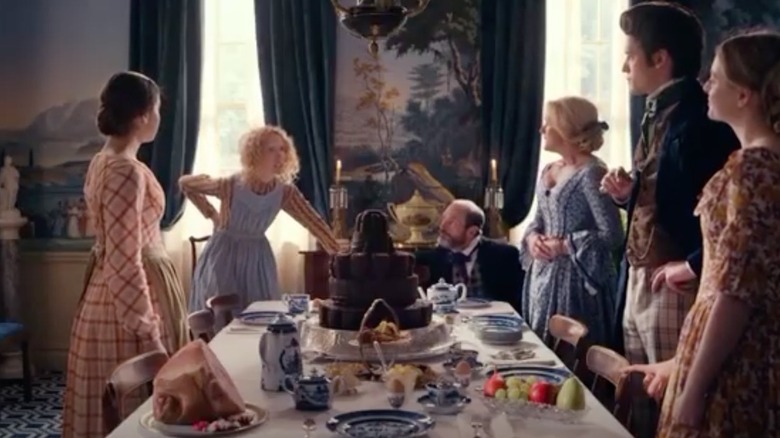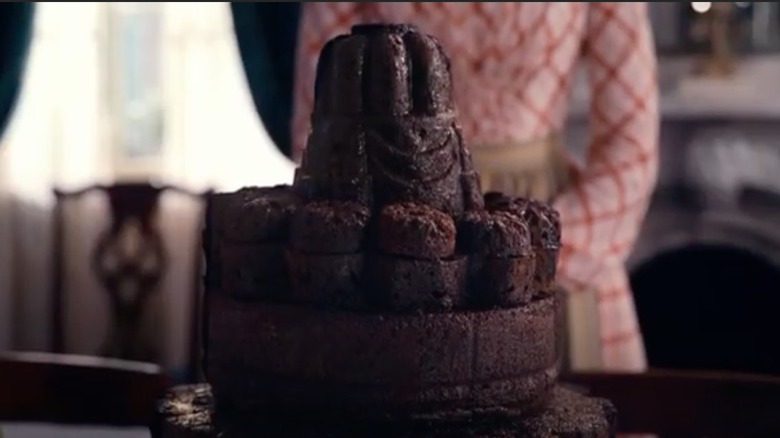The History Behind The Award-Winning Black Cake From Dickinson
Emily Dickinson is widely considered one of the greatest poets of all time. Some of her works include "Escape is such a thankful Word," "Safe in their Alabaster Chambers," and "Nobody knows this little Rose," just to name a few (via Famous Poets and Poems). Dickinson broke barriers and paved the way for poets for generations who have been lucky enough to follow in her footsteps.
Contrary to popular belief, however, Dickinson wasn't an eminent figure during her lifetime in the mid-1800s. She instead became famous posthumously, with her life being honored in many ways, including through various films and television shows. For one, actress Hailee Steinfeld currently portrays her in the Apple TV series "Dickinson."
Dickinson penned nearly 1,800 poems in her 55 years, only a few of which were published while she was alive, according to Brittanica. She never married and lived in her father's Amherst, Massachusetts farmhouse, where she was known in her community to bake tons of bread and cakes for family and friends, says Atlas Obscura. One of her recipes has actually become quite notorious for its tragic history as well as its hefty amount of ingredients. Behold: the black cake.
Where did the famous black cake recipe originate?
The black cake makes an appearance in Season 2, Episode 2 of "Dickinson" called "Fame Is a Fickle Food," which revolves around a community baking contest at which Dickinson's cake, well, takes the cake (per IMDb). However, what the show doesn't reveal is that the black cake wasn't a 100% original recipe of Dickinson's. In fact, black cake is a traditional Caribbean Christmas cake with a time-consuming, labor-intensive recipe, reports Atlas Obscura.
The origin of black cake, related to British fruit cake, traces back to Indigenous and African people who were enslaved by English colonizers and forced to produce sugar. The recipe for this molasses-, rum-, and spice-filled cake likely made its way to New England, where Dickinson lived, during the slave trade. Both the original Caribbean recipe and Dickinson's are dense with dried fruit such as raisins, currants, and candied citron, plus spices like nutmeg, cinnamon, and mace.
Dickinson's handwritten recipe for the cake resides in the Harvard University Houghton Library archives, along with the largest collection of her poems, letters, and household artifacts. The recipe was scribed within a letter from Dickinson to her friend Nellie Sweetser. To bake your own monstrous black cake at home à la Emily Dickinson, all you'll need is a mere 2 pounds of flour, 2 pounds of sugar, 2 pounds of butter, 19 eggs, and 5 pounds of raisins, as well as currants, citron, brandy, molasses, nutmeg, cloves, mace, cinnamon, and baking soda. The end result is far from your average cake: It's a 20-pound dessert with a rich dark hue, velvety texture, and smooth, slightly bitter flavor.

